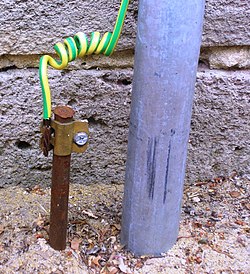Petepete_c said:My OPII can gets its ground from the conduit which gets its ground from the fuse panel which has multiple ground connections and its about 2 feet away from it. An earth electrical ground can be defined / done in a number of ways. Most important that you have a good ground to the can / panel...thinking its the first sentence in the HAI OPII installation manual. Adjacent Leviton 42" can also is connected to same ground.

Have you considered the location of the surge protector device in relation to the OPII and the earth? In order for the device to protect the OPII it must have a shorter wire run between itself and earth than the run between itself and the OPII.
Mike.
